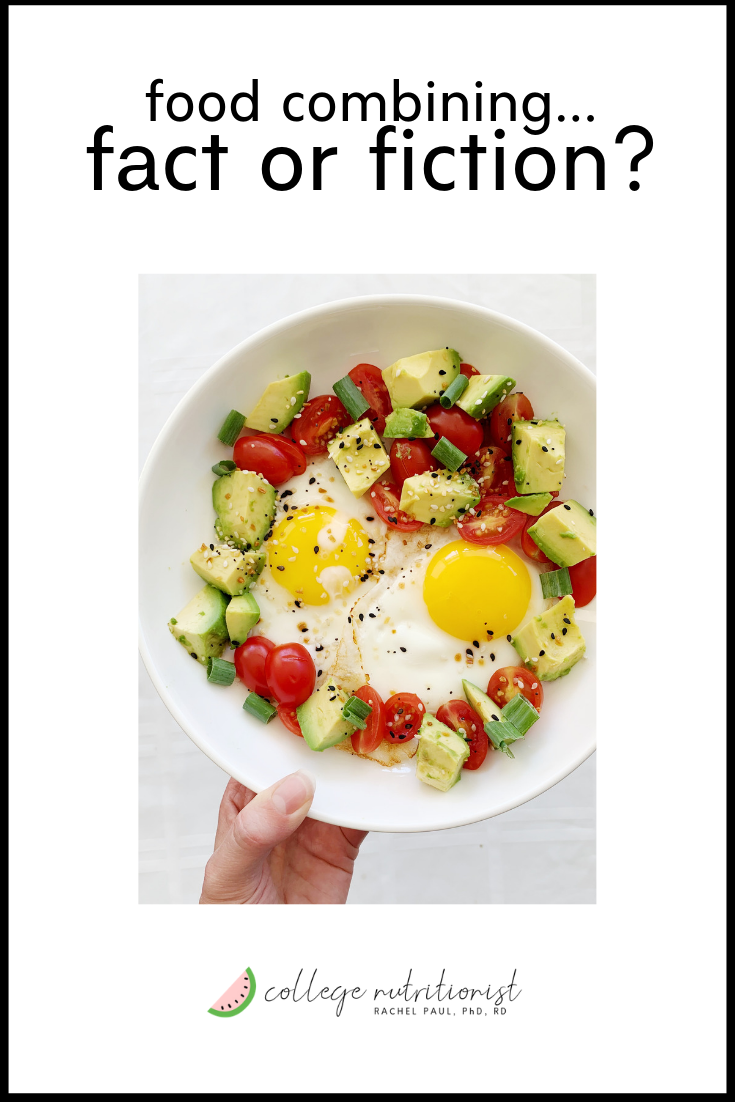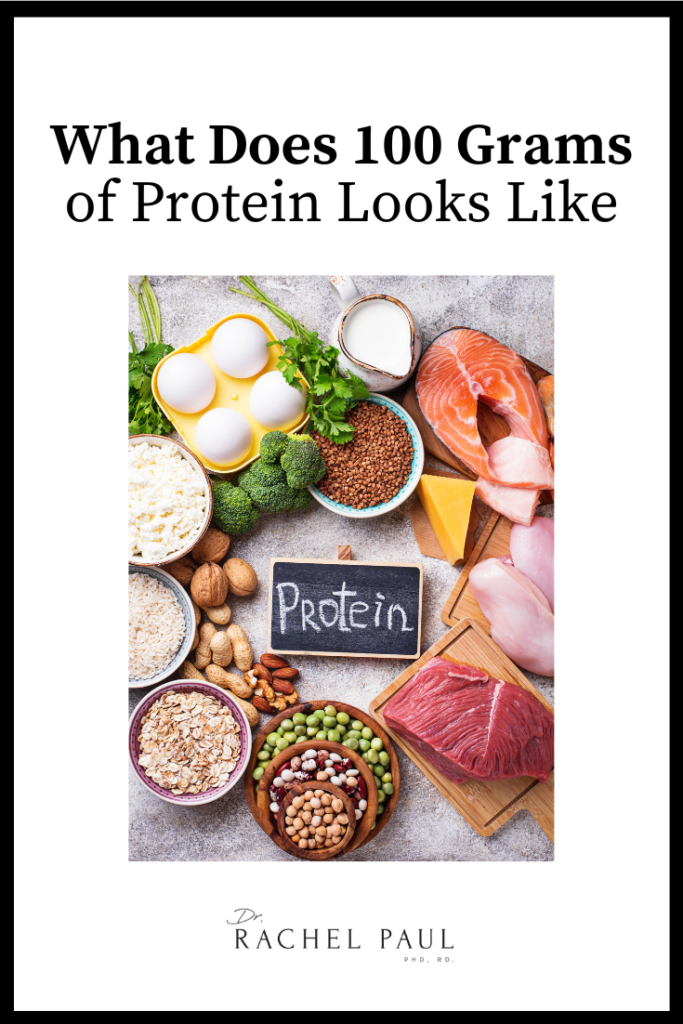I’ve received a lot of questions recently about Food Combining, and whether it’s legit. Let’s answer some common questions.
What is Food Combining?
But first, the most important piece of info I want to leave you with is:
The vast majority of foods are all “mixed” in terms of macronutrients ALREADY. For example, vegetables and grains contain both protein and carbohydrates; nuts contain protein and fat; dairy contains protein, fat, and carbohydrates, etc.
Therefore, the essence of Food Combining doesn’t make a lot of sense.
Fact or Fiction? Food Combining improves digestive function and is good for one’s health.
FICTION!
There isn’t any research to support digestive or health claims.
One study looked at whether it helped with weight loss vs. a balanced diet of the same reduced calorie amount (1100 calories). Both diets were equally as effective.
Fact or Fiction? Combining a “fast-digesting food” with a “slow-digesting food” causes a “traffic jam” in your digestive tract, which can lead to “unhealthy fermentation of the faster digesting foods”
FICTION!
The stomach maintains such an acidic pH that almost no bacteria can survive.
In general (not in any way related to Food Combining), beneficial bacteria DO live in the large intestine, and they DO ferment undigested carbs like fiber to release gas and beneficial short-chain fatty acids – which have been linked to reduced inflammation, improved blood sugar control and a lower risk of colon cancer.
Fact or Fiction? If two foods require different pH levels, the body cannot properly digest both at the same time.
FICTION!
If you eat a very acidic (low pH) or very alkaline (high pH) meal, the part of the digestive tract your food is in will just add more or less digestive juices in order to maintain the necessary pH level.
When food enters your stomach, gastric acid and enzymes pepsin and lipase are released. These enzymes digest protein and fat, and are released even if there is no protein or fat present in your food.
In addition, your small intestine adds bicarbonate (which is very alkaline, to keep your small intestine’s contents at a pH of ~6) to any food that enters it. This is the pH at which the enzymes in the small intestine function best.
However! Some foods do increase absorption of different nutrients
-
Vitamin C and Iron: The absorption of non-heme iron (in plant-based sources of iron such as spinach, beans or fortified cereals) is typically very low – less than 10%. Adding vitamin C (such as from citrus fruits) makes the non-heme iron more absorbable.
-
Carotenoids and Fat: Carotenoids are compounds found in red, orange and dark green vegetables (like carrots, tomatoes, red bell peppers, spinach, broccoli, etc.). They are more easily absorbed by the body when eaten with a fat, e.g. nuts or dairy (e.g. string cheese).
Are there any potential health problems from following Food Combining?
Not necessarily health related, for the typical person, but there could be some unnecessary psychological negatives and stresses with feeling like certain foods can only be eaten with other foods causing difficulties in realistic meal planning and eating.







